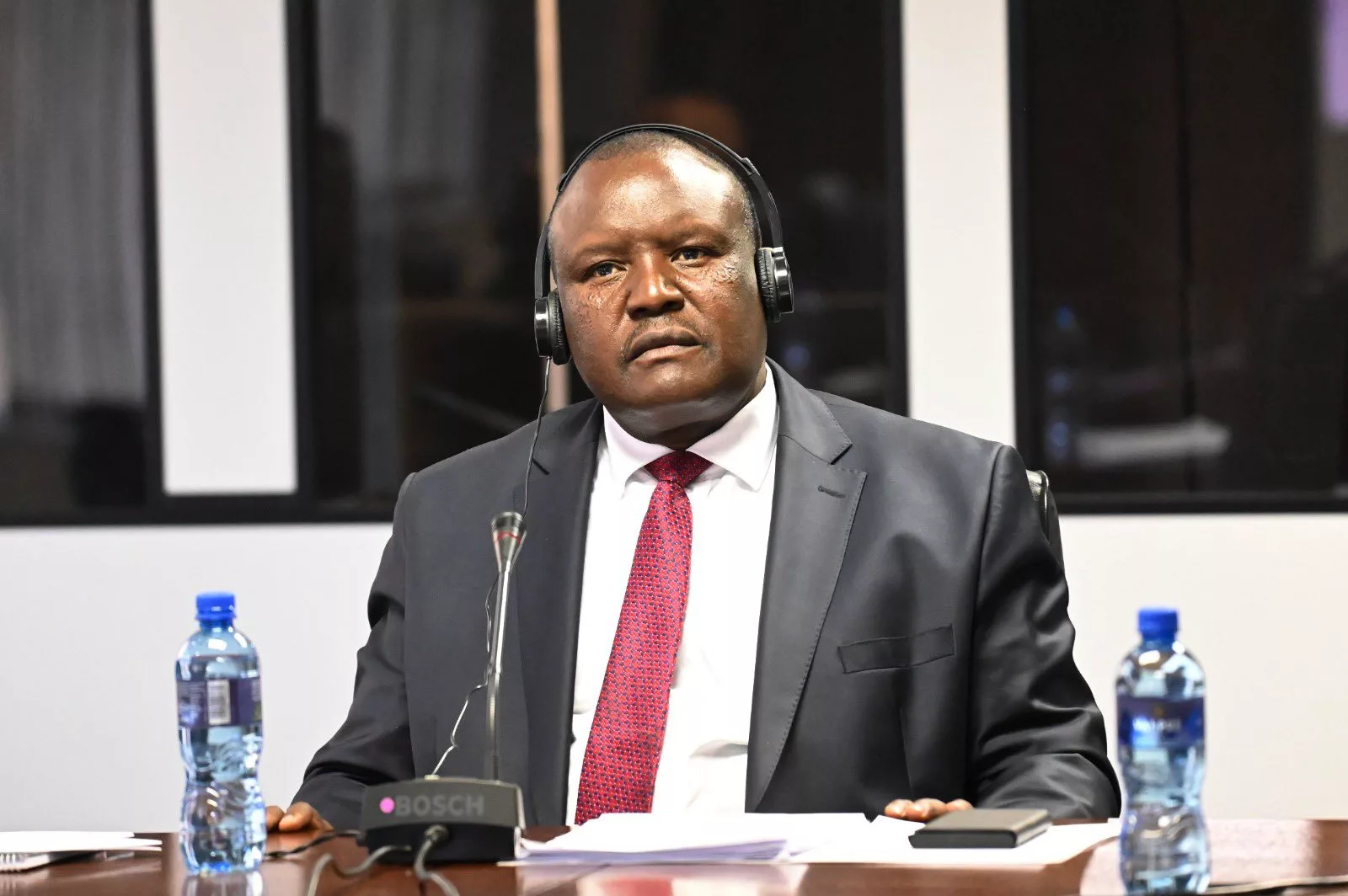|
Getting your Trinity Audio player ready...
|
Writes Persistence Gwanyanya
Sometimes, it is advisable to maintain a winning formula.
The resolution by the Monetary Policy Committee (MPC) of the Reserve Bank of Zimbabwe (RBZ) to stay the course of a tight monetary policy stance, as expressed in the Mid-Term Monetary Policy Statement of 2023, is instructive.
Clearly, this stance will allow current stabilisation measures by both RBZ and Treasury to be fully effective.
The tight monetary policy stance shall continue to be anchored in the aggressive interest rate policy and open market operations (OMO).
As the monetary targeting framework, which essentially entails targeting the reserve money growth, became an ineffective monetary anchor, RBZ established the interest rate policy and open market operations (OMO) as new monetary anchors at the beginning of this year.
RBZ pursued reserve money targeting from 2020 until the beginning of 2023, when the reserve money-exchange rate-inflation relationship started to weaken from July 2021, rendering the monetary targeting framework ineffective.
Put simply, the MPC is now of the view that targeting reserve money supply growth is no longer as effective a way of managing stability as before.
Actually, we have reached a point where an increase in reserve money actually reflects monetary tightening.
Growth in Zimdollar reserve money is now largely driven by statutory reserves, as excess reserves — which are essentially money on the RTGS platform, and, therefore, readily usable for transactions — have been maintained at $0,1 billion for a long time since July 2021.
Because the Zimdollar statutory reserves now consist of more than 90 percent of Zimdollar reserve money — which is locked in RBZ computer systems, and, therefore, not available for immediate use — this renders monetary targeting impotent as a policy anchor.
The last monetary target was a 0 percent growth in reserve money, and meeting this target was no longer an achievement.
Despite abandoning the monetary targeting framework, managing excess reserves remains key to achieving stability.
RBZ has recently increased excess reserves to $38 billion for convenient settlement of transactions in the market.
Reflecting on the increased drive towards monetary tightening, RBZ introduced the NNCD (non-negotiable certificate of deposit) maturity profiles of seven, 14, and 21 days with immediate effect. As of July 14, 2023, NNCDs stood at $163,5 billion.
Currently, the usable Zimdollar balances are estimated at $810 billion (US$180 million) against foreign currency deposits of US$1,4 billion, including an estimated US$2 billion-US$7 billion circulating in the informal sector, which supports my argument that it is not Zimdollar money supply growth but it is the velocity that is a key driver of stability today.
A further reflection on monetary aggregates is revealing.
The Zim dollar component of broad money of $14,3 trillion as of June 30, 2023 was only 18,4 percent and currency depreciation was the major driver of the increase of $10,4 trillion in broad money supply over that period.
Similarly, reserve money growth of 923,5 percent to $1,06 trillion was largely driven by currency depreciation, as the Zim dollar reserve money only grew by $123,9 billion to $182,61 billion in the first half of the year.
The Zim dollar depreciated to a historical level of US$1:$6 926 in June 2023 from US$1:$684 at the beginning of the year.
Interestingly, we observed a de-link between money supply and exchange rate depreciation and inflation from April to June 2023, which cements the argument that the velocity of money is the major driver of stability today.
Clearly, the velocity of money is a function of confidence in not only the Zim dollar, but the business and economic environment at large.
As usual, confidence levels dip as we approach elections; worse still, when poll dates are proclaimed, which could have been the situation post-May 31, 2023.
There is definitely a need to cure the confidence crisis, which arose from the traumatic experience with the Zim dollar from hyperinflation to losses occasioned by currency reforms.
This is arguably the reason RBZ is overly cautious about Zimdollar cash injection in the economy.
Cash in circulation was measly 0,06 percent of the total money supply as of June 30, 2023.
Even the largest denomination of $100 is very small by any standard.
The largest cash denomination on the continent is US$5-US$10 equivalent, whilst international best practice is US$20 equivalent.
Judicious liquidity management, especially concerning payments of contractors and suppliers, will go a long way in sustaining current stability.
The government is now paying significant amounts of contractors’ invoices — up to 80 percent in foreign currency.
This has been made easy by increased dollarisation and the resultant growth in forex revenue collection by Government to 50 percent.
Sustaining these payments, as well as the forex portion of civil servants’ salaries, is going to be a key issue as dollarisation levels moderate.
It is prudent to prioritise a reduction in dollarisation levels from the current ones of more than 80 percent to last year’s levels of 50 percent-60 percent.
Whilst stability is generally viewed as a monetary phenomenon, a strong economy and local currency demand by Government especially is seen as important in underwriting a local currency.
As such, the strong performance in the real sector of the economy, typified by the growth of 5,3 and 6 percent this and next years, as well as the projected balance of payment (BOP) surplus up to next year, will go a long way in supporting local currency stability.
The country achieved a BOP surplus in the six months to June 30, 2023, and is projecting to close the year at US$274,5 million. Foreign currency receipts of US$5,56 billion have been recorded by June 30, 2023, which is an increase of 3,5 percent from the comparable year amount of US$5,4 billion.
Whilst it is prudent for the Government to continue underwriting the Zim dollar by increasing its demand — especially in taxes, duties, levies, and fees — due consideration should be on its effect on dollarisation.
This is why expediting the finalisation of the transactional phase of Gold-Backed Digital Tokens (GBDT) is necessary.
This product, which shall be known as ZiG, is seen as offering a viable alternative to the US dollar and as a store of value in the domestic transaction space.
The uptake of the DBGT bears testimony to its appeal in the market.
So far, amounts of US$50,5 billion and US$7,74 million have been sold to the market.
All these are fully backed by 325,02kg of physical gold.
Importantly, the GBDT will form the basis of the Central Bank Digital Currency, which is where the world is going.
It appears tightening is yielding fruit, as the Zim dollar has strengthened and prices are softening, albeit slowly.
Voluntary liquidations are increasing, with $112,57 million and $107,19 million having been sold and purchased through the interbank market, which is actually higher than the $95,85 million sold under the wholesale foreign currency auction market.
With increased voluntary liquidations, the market is expected to be self-liquidating and self-sustaining, which are important for durable stability.
RBZ commendably further liberalised the market by opening up the wholesale foreign currency market to micro, small, and medium businesses, as well as individuals.
All these measures, including maintaining interest rates at 75 percent and 150 percent for productive sector lending and the bank rate, respectively, are seen as sustaining stability in the second half and beyond.
The reduction in both annual and month-on-month inflation to 101,3 and minus 15,3 percent in July, from 175,8 percent and 74,5 percent in June, respectively, is instructive.
The cooling inflation has seen a return to the pre-May inflation path, with month-on-month inflation of 3 percent expected to result in year-end inflation of 60 percent-70 percent.
It is reassuring that by instituting tightening measures ahead of the elections, the Government has shown commitment to currency stability beyond the polls.
Persistence Gwanyanya is an economist and a member of the RBZ Monetary Policy Committee. He is the founder and managing director of the Bullion Group of Companies. He writes in his personal capacity. He is reachable at: [email protected]






